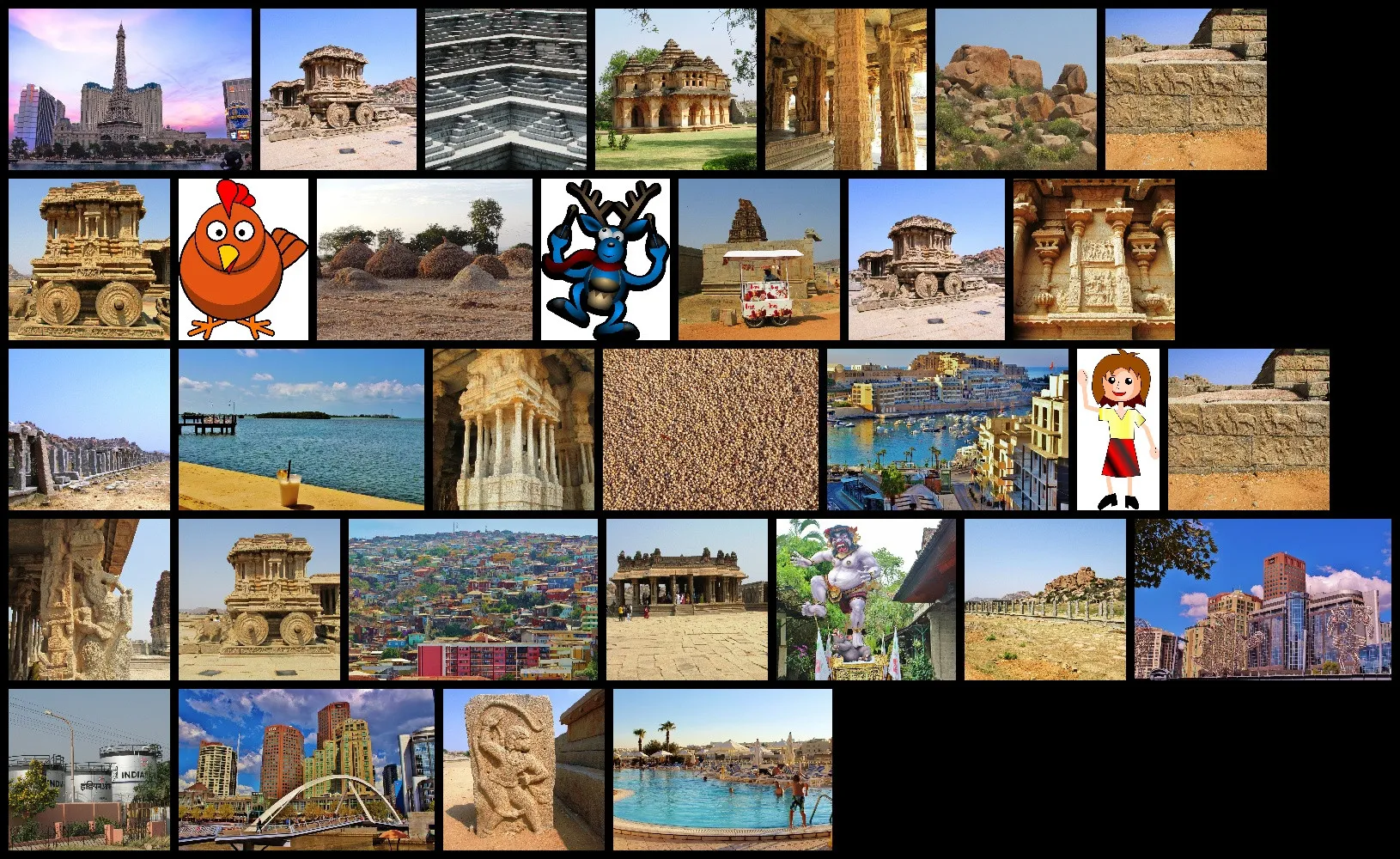我想在同一个窗口中显示2、3或更多的图像。
我的问题是如何将第二个、第三个图像放置在主图像的右侧(上方、左侧或上方)。
我想使用OpenCV创建类似于这样的东西。
---------------
| | |
| | |
---------------
| | |
| | |
---------------
提前感谢 Jorge
我最近实现了这个功能,所以想分享一下。 它使用C++ API。代码应该是很容易理解的。
/**
* @brief makeCanvas Makes composite image from the given images
* @param vecMat Vector of Images.
* @param windowHeight The height of the new composite image to be formed.
* @param nRows Number of rows of images. (Number of columns will be calculated
* depending on the value of total number of images).
* @return new composite image.
*/
cv::Mat makeCanvas(std::vector<cv::Mat>& vecMat, int windowHeight, int nRows) {
int N = vecMat.size();
nRows = nRows > N ? N : nRows;
int edgeThickness = 10;
int imagesPerRow = ceil(double(N) / nRows);
int resizeHeight = floor(2.0 * ((floor(double(windowHeight - edgeThickness) / nRows)) / 2.0)) - edgeThickness;
int maxRowLength = 0;
std::vector<int> resizeWidth;
for (int i = 0; i < N;) {
int thisRowLen = 0;
for (int k = 0; k < imagesPerRow; k++) {
double aspectRatio = double(vecMat[i].cols) / vecMat[i].rows;
int temp = int( ceil(resizeHeight * aspectRatio));
resizeWidth.push_back(temp);
thisRowLen += temp;
if (++i == N) break;
}
if ((thisRowLen + edgeThickness * (imagesPerRow + 1)) > maxRowLength) {
maxRowLength = thisRowLen + edgeThickness * (imagesPerRow + 1);
}
}
int windowWidth = maxRowLength;
cv::Mat canvasImage(windowHeight, windowWidth, CV_8UC3, Scalar(0, 0, 0));
for (int k = 0, i = 0; i < nRows; i++) {
int y = i * resizeHeight + (i + 1) * edgeThickness;
int x_end = edgeThickness;
for (int j = 0; j < imagesPerRow && k < N; k++, j++) {
int x = x_end;
cv::Rect roi(x, y, resizeWidth[k], resizeHeight);
cv::Size s = canvasImage(roi).size();
// change the number of channels to three
cv::Mat target_ROI(s, CV_8UC3);
if (vecMat[k].channels() != canvasImage.channels()) {
if (vecMat[k].channels() == 1) {
cv::cvtColor(vecMat[k], target_ROI, CV_GRAY2BGR);
}
} else {
vecMat[k].copyTo(target_ROI);
}
cv::resize(target_ROI, target_ROI, s);
if (target_ROI.type() != canvasImage.type()) {
target_ROI.convertTo(target_ROI, canvasImage.type());
}
target_ROI.copyTo(canvasImage(roi));
x_end += resizeWidth[k] + edgeThickness;
}
}
return canvasImage;
}
这里是样例输出。

或者只需使用:
Mat a, Mat b, Mat dst // a,b loaded
cv::hconcat(a, b, dst) // horizontal
cv::vconcat(a, b, dst) // vertical
Mat dst -> | a | b |
或者使用向量(vector)来完成:
std::vector<cv::Mat> matrices = {
a, b
};
hconcat(matrices, dst);
cv :: Mat 用于C ++, IplImage * 用于C)
- 将您的图像复制到大图像中
- C ++:使用
Mat :: Mat(const Mat&m,const Range&rowRange,const Range&colRange)构造函数获取指向原始窗口子图像的 cv :: Mat ,然后使用 copyTo 方法将您的小图像复制到大图像中
- C:在大图像中设置ROI并将小图像复制到其中
- 显示您的大图像
尝试以下代码(请注意我的注释):
Mat img = imread("lena.JPG");
CV::Mat chann[3], all; // creating
split(img, chann); // split an image into their color channel and n keep them inside
a 3 element array called chann
imshow("ppl", img);
hconcat(chann, 3, all); // joining the images together in a horizontal manner, the
array, number of array, and the destination
imshow("B :: G :: R",all); // this just the little help i could provide